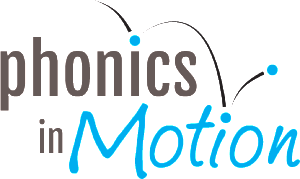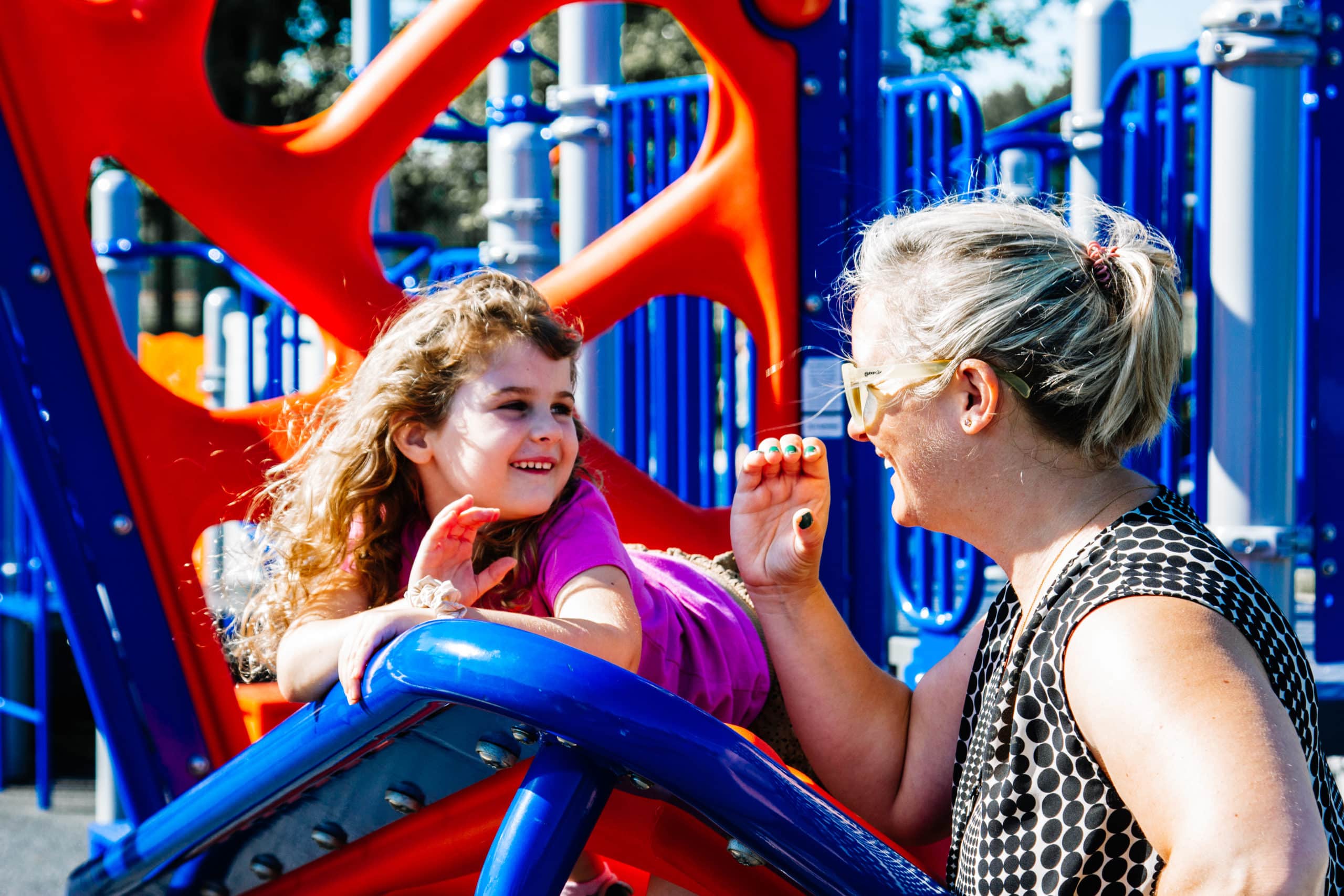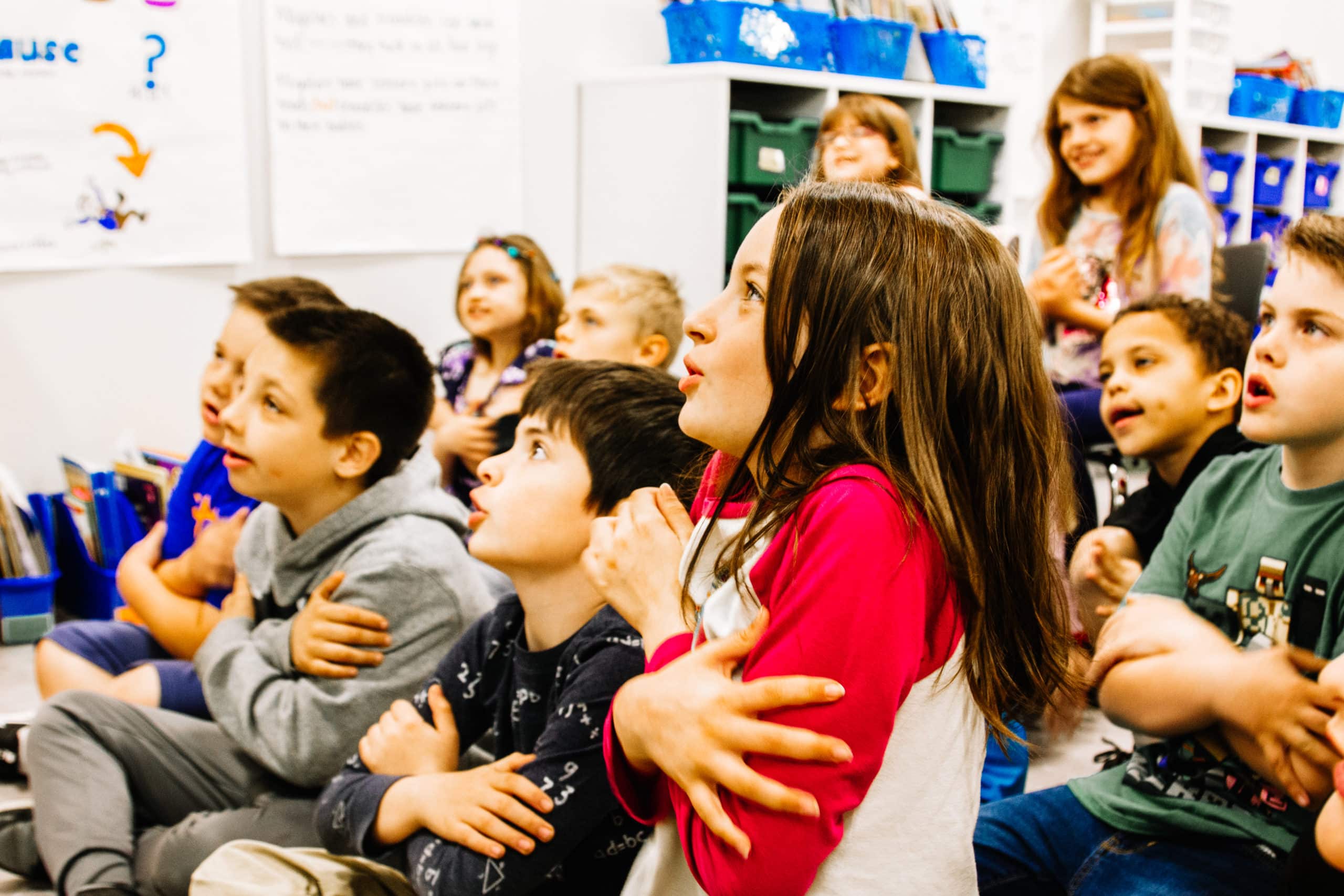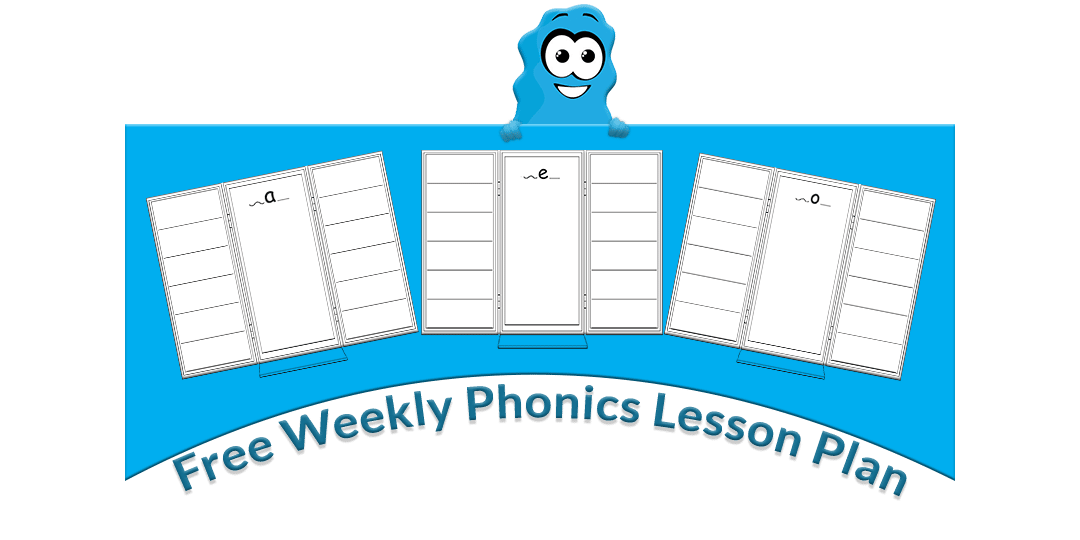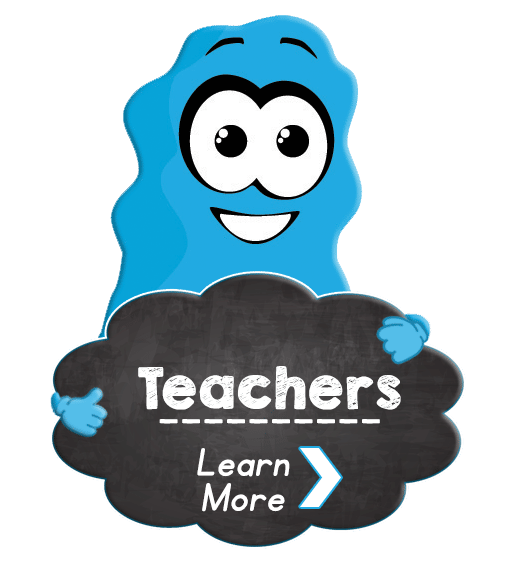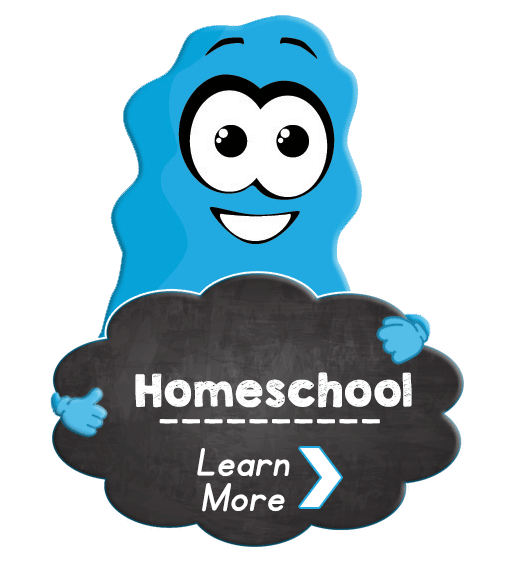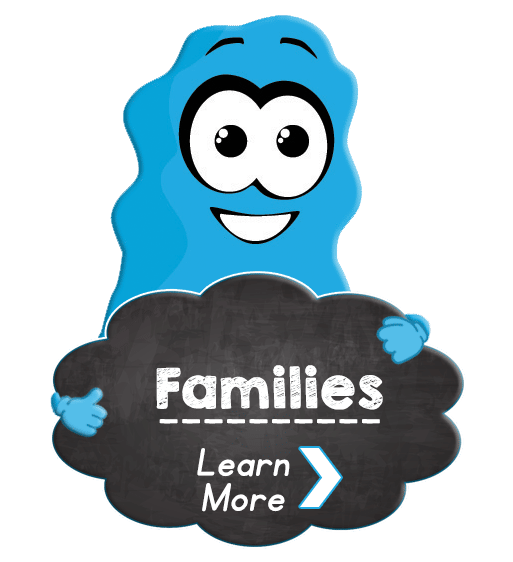How To Teach Reading Skills To Preschoolers
 If you’ve ever wondered how to teach reading skills to preschoolers, you aren’t alone.
If you’ve ever wondered how to teach reading skills to preschoolers, you aren’t alone.
This is one of the most popular questions that come up in our conversations with parents. Families know the importance of giving their kids a solid head start in literacy education, but sometimes they just aren’t sure how!
It is so important to meet preschoolers right where they are and make learning literacy part of their everyday, authentic interactions! Creating a low-pressure, risk-free environment for reading and writing skill development sets children up to build a lifelong love of learning.
To teach reading skills to preschoolers, focus on teaching phonemic awareness, phonics, and vocabulary. This will lay the natural foundation for them to develop reading comprehension and reading fluency as they enter kindergarten.
Why You Should Teach Reading To Preschoolers
Preschoolers are learning a language, not just words.
Preschoolers have an amazing capacity for learning language — and reading is part of that.
Reading together helps develop your child’s vocabulary because it gives them an opportunity to hear new words spoken aloud. When you read aloud to your child, you’re teaching them new words without even realizing it!
Preschoolers are eager learners with boundless energy and curiosity about the world around them. They want to know how things work, what makes things happen and how everything fits together. These questions drive their desire to learn new words, sounds, and letters — the building blocks of reading.
In addition to being excited about learning new things, preschoolers are also very motivated by their environment and the people around them. If they see older siblings or parents reading books or playing games with their children, they’ll naturally want to do those things as well — which means even more opportunities for learning!
Reading helps kids learn how to think critically and develop problem-solving skills. By reading together with your child at preschool age, you’re helping them engage in a type of thinking that requires critical thinking and problem solving — two important life skills that will benefit them throughout their lives. Reading also encourages kids to use their imagination, which helps develop creativity in new ways daily!
Reading to young children can help them learn about the world around them. It can also help build their vocabulary and improve their overall language skills. But perhaps most importantly, reading together can form a special bond between parent and child that will last a lifetime.
How To Teach Preschoolers To Read With the Science of Reading
The Science of Reading is a body of research that outlines science-backed methods of teaching reading so that kids learn the way they learn best. The Science of Reading movement is gaining momentum in schools and homeschools across the globe, and you can use the information to give your preschooler a head start at reading.
How To Teach Phonemic Awareness To Preschoolers
Kids become good readers when they learn to identify and isolate sounds! Since phonemes are the smallest units of sounds in the English language, this is a great place to start with little ones.
Instead of practicing letter names, focus on letter sounds. Use everyday experiences to practice phonemic awareness. For example, we’re /b/, /b/, /b/ baking cookies! They taste /g/, /g/, /g/, good!
By integrating literacy skills into everyday environments, kids will begin to look for them everywhere. And once they become investigators of language, they are so proud to show you what they know!
How To Teach Phonics To Preschoolers
Phonics is the ability to understand that phonemes match with written language.
For example, they understand that /s/ matches with the letter S. This is a skill that kids love to practice! And teaching phonics doesn’t need to be complicated. You can easily practice while reading or going about your day.
You can make something as simple as grocery shopping an opportunity to learn phonics. For example, look signs for their favorite snack at the store. Ask, “Do you see a letter that makes the /b/ sound? Right, that sign says /b/, /b/, banana. And what about /a/,/a/? Oh, right! I see A for /a/pple!”
How To Teach Vocabulary To Preschoolers
Teaching vocabulary is something that every parent does naturally because they talk to their children all the time. But it’s also something that you can intentionally work on in your own home.
Being intentional with growing vocabulary helps little ones understand what’s going on around them. Preschoolers are constantly learning new things about the world around them, but they don’t always understand what they’re seeing or hearing. When you use words that describe what they’re seeing or hearing, it helps them understand what’s going on around them and gives them tools for understanding more complex things later on in life.
How To Teach Reading Comprehension To Preschoolers
It’s never too early to start teaching children how to read and comprehend what they read. Reading comprehension is the ability to connect what you’ve just read with what you already know, as well as understand the meaning of what you’re reading.
Reading comprehension is important because it helps your child understand what they read and helps them learn new words. It also helps them understand how to use information from books, magazines, and other reading materials.
You can teach your preschooler these skills by teaching them how to ask questions while reading — this helps them think about what they’re reading and figure out its meaning. You can also help them understand that there are different kinds of texts (such as stories, poems or articles) and each type has its own way of communicating ideas.
How To Teach Reading Fluency To Preschoolers
Children who can read fluently can better focus on what they are reading and understand the meaning of what they are reading.
It is the ability to read text accurately, smoothly, and with expression. To be fluent readers, children must be able to read words in isolation, connect text, and also practice reading aloud.
Children who are not fluent readers tend to struggle with the mechanics of reading, such as understanding how sounds are represented by letters and groups of letters. This can lead to frustration and discouragement, putting them at risk for future academic problems.
Of course, we cannot expect preschoolers to master reading fluency, but we can help them develop pre-literacy skills that lay the foundation early.
By consistently exposing kids to literacy skills and making it part of their everyday lives, they will naturally begin to make the connections between all pillars of early literacy.
How To Teach Reading Skills To Preschoolers: Tips and Tricks
Tip 1. Make Reading Fun
The best way to get kids interested in reading is by making it an enjoyable activity. This means finding books that interest them and letting them see you enjoy books too — even if it’s just looking at pictures or hearing you read from a favorite book aloud.
Tip 2. Create A Book Friendly Environment
Make books available everywhere — at home, in the car, and at preschool or daycare. Have more than one copy of each book so kids can have their own copy — this will help build excitement about reading and make it easier for kids to practice reading whenever they want! And don’t forget about magazines and newspapers — these can be great ways for kids to practice their decoding skills
Tip 3. Foster A Culture Of Learning
Preschoolers love to learn! They are fascinated by the world around them and want to know how things work. This is a great opportunity for parents to help their children develop a learning culture and foster an early interest in literacy.
Parents can do this by providing opportunities for their children to explore and investigate the language around them. By doing so, they are helping their children develop critical thinking skills that will help them later in life when they begin formal education.
How Phonics in Motion Teaches Preschoolers To Read and Write
Still wondering how to teach reading skills to preschoolers? This is how we do it at Phonics in Motion!
Method 1. Multisensory Component
Kids learn best when they use all of their senses. And that goes for reading, too.
Traditional curriculums and reading programs isolate literacy skills. You can tell you’re working with a balanced literacy program if it is heavy on rote memorization and sight words and light on phonemic awareness and a structured approach to reading.
One of the foundational components of Phonics in Motion is Kinesthetic Motions for the Phonemes (KMPs). These are distinct motions taught for each phoneme, allowing kids to isolate each phoneme by feeling the tension of each sound. And these motions aren’t random – each motion matches the articulation of the phoneme, so they get it right every time.
By using KMPS, kids can bring each and every literacy interaction back to the phonemic awareness level and have a ton of high-energy fun while doing it!
Method 2. Harness Kid Energy
If you’ve ever met a preschooler, you know they are high energy. Some children resist reading because they feel like they have to stop the fun and participate in activities that aren’t as exciting.
With Phonics in Motion, we believe that kids should be allowed to be kids. We use high-energy motions, stories, poems, and activities to keep kids moving and learning at the same time.
We don’t work against kid energy; we work with it.
This looks like playing on the playground but weaving in KMPs. Or pretend to run away from the Reading & Writing Monster to learn how to correctly form letters (proper stroking and directionality in one multisensory activity, anyone?).
Method 3. Use the Science of Reading
At Phonics in Motion, we know that kids don’t magically learn how to read. Reading science tells us that children must be explicitly taught, follow a scope and sequence, and we must gradually release the responsibility of the skill to the child. Hoping they catch on doesn’t cut it.
That’s why our literacy programs are backed by the Science of Reading and show kids exactly what they need to know in a kid-friendly language they can understand. We cut out the needless instructions about language rules so that they can connect the dots between all pillars of literacy faster.
Instead, the stories and motons are the instructions. Did they remember our handwriting story about how /a/ is an acrobat? Great – now they know exactly how to form that letter every time they need to write it! It’s as simple (and as fun!) as that!
Method 4. Keep it FUN
Our bottom line at Phonics in Motion is that kids need to have fun while learning how to read and write. Creating an environment that is fun, interactive, and honors the spirit of childhood is an essential part of everything we do.
Young learners are not little adults, and pushing them into an environment that doesn’t feel comfortable only hinders learning. It is so important that children feel free to take risks when it comes to reading and writing, and they can only do that when they feel the environment is a good fit!
Ready to teach reading skills to preschoolers with Phonics in Motion? Check out our literacy programs for educators, homeschoolers, and families!
